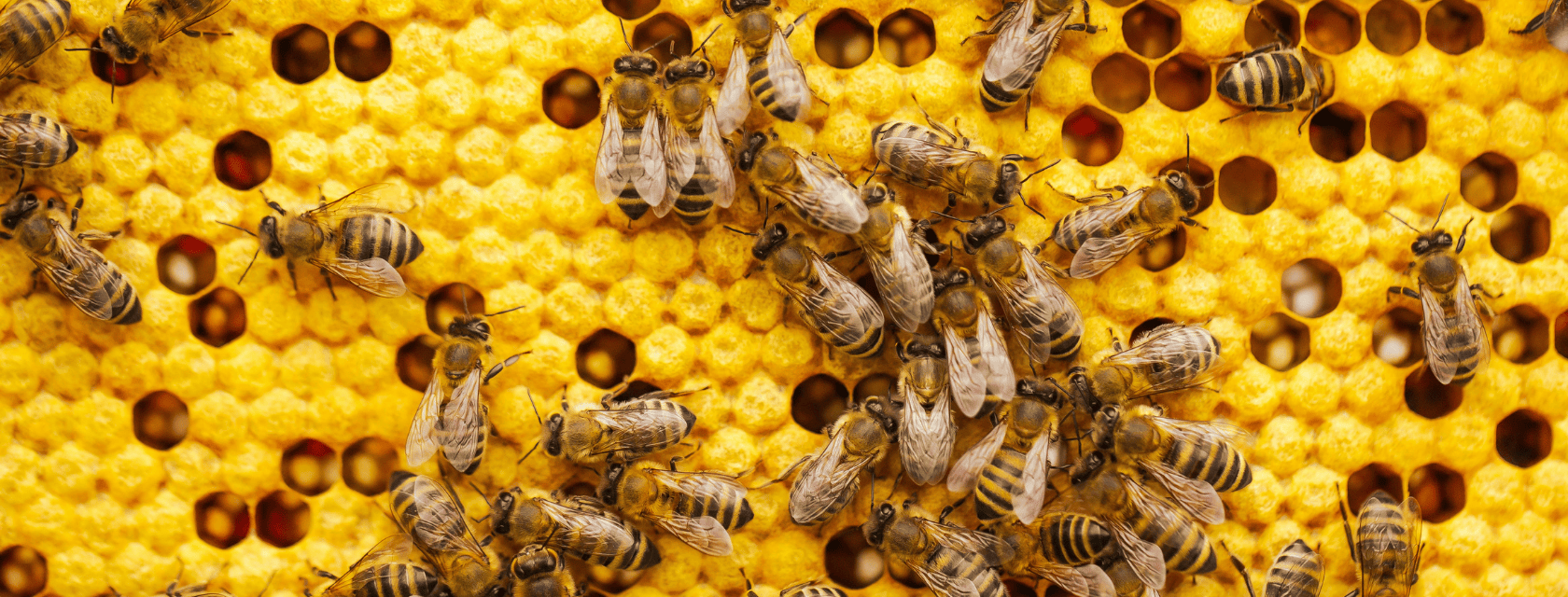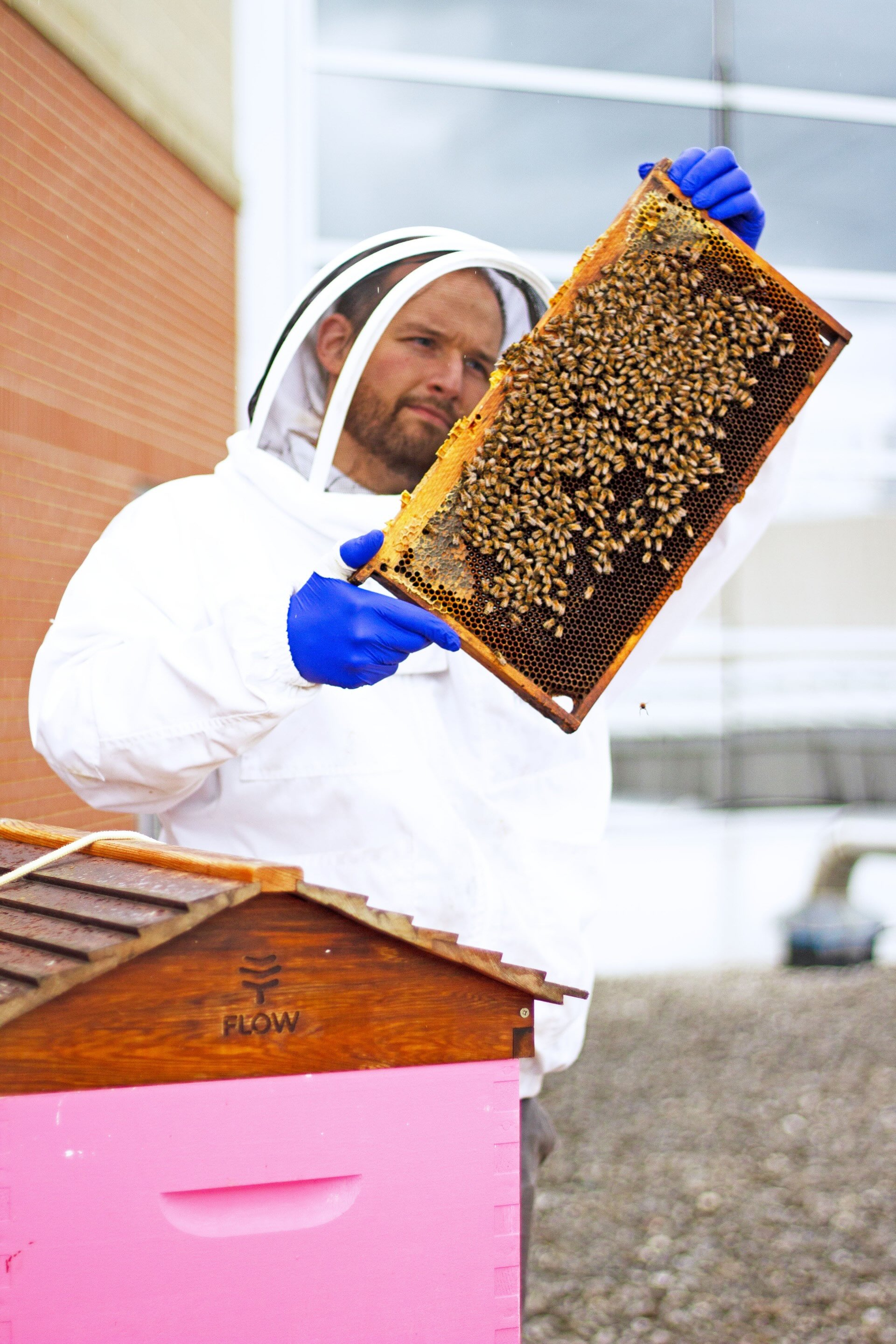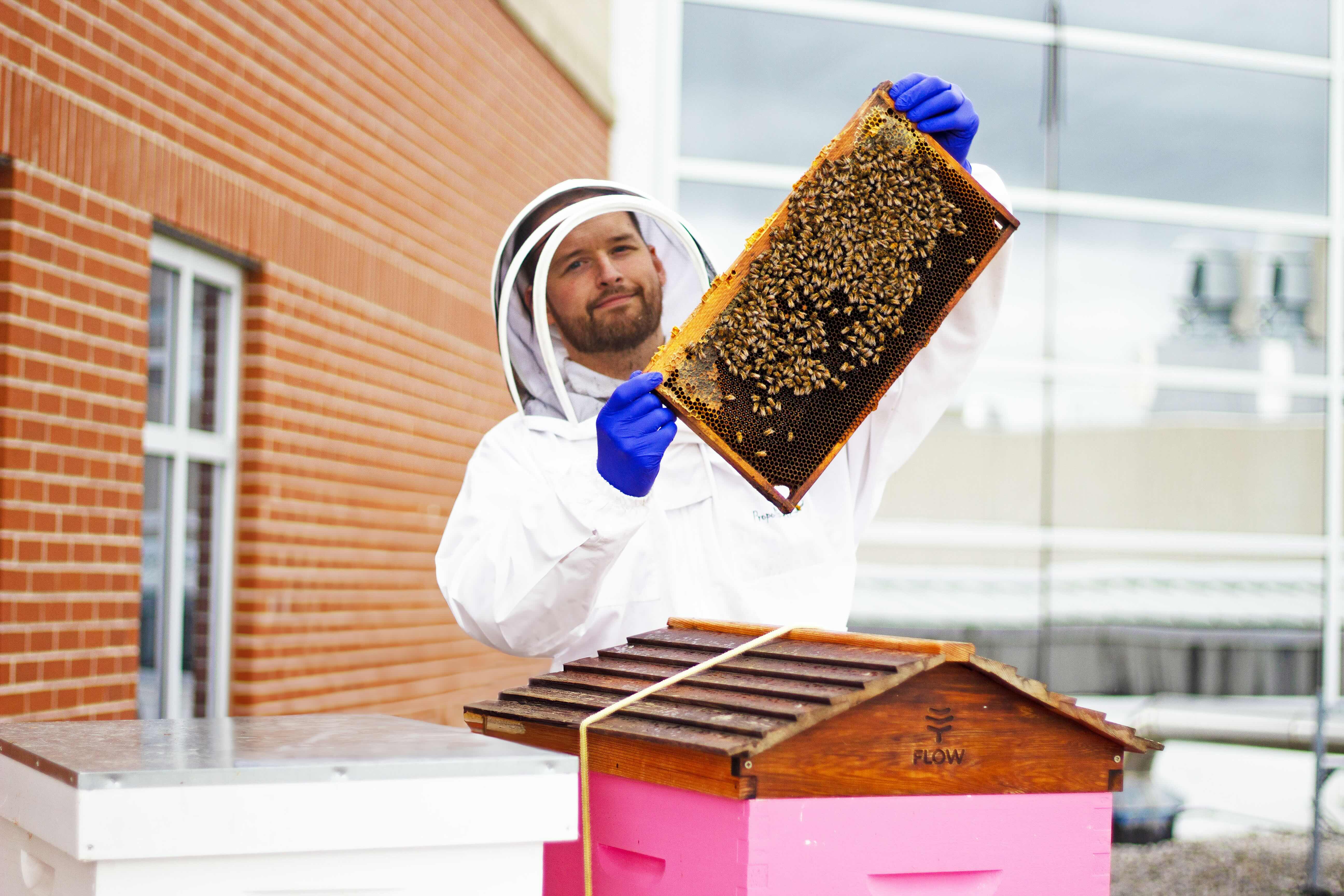More honey bees dying, even as antibiotic use halves

More Honey Bees Dying, Even as Antibiotic Use Halves
Despite tighter restrictions on antibiotics used in Canadian beekeeping, honey bee death rates are still rising.
A new study led by University of Guelph researchers, published in Nature Sustainability, is the first large-scale project to assess antibiotic usage trends and their impact on honey bee health in Canada.
The withdrawal of antibiotics, following recent regulation changes, was one of the top predictors of honey bee overwintering mortality — a result that surprised lead author Dr. Brendan Daisley.

“You’d assume the lessening of antibiotics might be associated with improved health outcomes, especially since antibiotics are so overused,” says Daisley, a postdoctoral researcher in the College of Biological Science. “But without effective alternatives, it seems the bees have developed a dependency on them.”
Using national survey data, researchers investigated more than 700,000 honey bee colonies per year between 2015 and 2023. Colony losses varied by province, but overwintering mortality rose from an average of less than 20 to over 40%, even as antibiotic usage halved, decreasing from approximately 50 to 25% nationally.
During the period studied, a new framework in 2018 put forth by the World Health Organization (WHO) and adopted by U.S. and Canadian agencies decreased over-the-counter access for certain beekeeping antibiotics.
This was done to address antimicrobial resistance (AMR) — the rising resistance to antibiotics that makes infectious diseases more difficult to treat. AMR is one of top 10 public threats facing humanity, according to WHO.
“We didn’t know the repercussions of these global changes in antimicrobial stewardship,” he says. “But it shows one of the most important drivers of honey bee mortality rates is likely infectious disease, and the imbalance between ‘bad’ and ‘good’ microbes.”
‘Microbial apocalypse’ could explain global colony loss, rising food costs
Daisley is one of few scientists who study honey bees’ entire bacterial community, known as their microbiome, as a way to assess their health.
“It’s a catch-22 — we know antibiotics are very useful for controlling disease outcomes, but they also disrupt the microbiome and do not distinguish between harmful and beneficial bacteria,” says Daisley. “We could be experiencing a microbial apocalypse in front of our eyes.”
The findings are a major breakthrough in microbiome research, he says, and may help explain record losses of the world’s bee colonies.
Millions of colonies lost in the U.S. alone are already leading to the rising costs of honey and pollination services, Daisley says, as beekeepers are forced to increase imports of bees to compensate.
This further translates to rising food costs, decreased crop yields and the disruption of global food security.
‘All interconnected’: One Health approach needed for alternatives
In addition to antibiotic usage, researchers identified another unexpected predictor of honey bee mortality: nitrogen dioxide (NO2), a common air pollutant from diesel exhaust.
NO2 degrades floral odours and disrupts the bees’ ability to forage, researchers say, which could be contributing to colony loss.
“It’s all interconnected, and in my opinion, all links back to microbial ecology and the microbial homeostasis of pollinators,” Daisley says.
Given the complex relationships between bees’ microbiomes, their health and their environment, researchers call for a One Health approach, a systems-level view that assesses human, animal and environmental health more holistically.
“Honey bees epitomize the principles of One Health by serving as a tangible example of the interconnectedness of human, animal and environmental well-being — particularly through their microbiome, which reflects and mediates the impacts of ecological stressors, agricultural practices and disease transmission across systems,” Daisley says.
Solutions to stop colony loss will require the One Health approach, as factors like NO2 must be considered alongside antibiotic alternatives like probiotics.

In this emerging field, bee probiotics are still in development and far from widespread adoption. Daisley leads research to characterize several different probiotics’ mechanisms of action within the bees’ intestinal tracts.
“But we need more funding to support the study of alternatives,” Daisley says. “The next aim is also to comprehensively characterize the microbiome of bees, to develop a baseline understanding so we have something to compare it to.”
To accomplish that, Daisley and Dr. Emma Allen-Vercoe (Department of Molecular and Cellular Biology) lead the Canadian Bee Gut project at U of G, a nationwide crowdsourcing initiative that began in 2022. The project collects samples from about 1,000 beehives each year from every province to investigate the microbes found in bees that are critical to their health.
“It’s important to continue highlighting the value of research, especially in today’s climate,” Daisley says. “In the face of global food insecurity and widespread colony losses, projects like these play a vital role in supporting both environmental sustainability and the future of humanity.”
This work was enabled through the support of the Canada First Research Excellence Fund, Food From Thought and the Ontario Agri-Food Innovation Alliance, a collaboration between U of G and the Government of Ontario.
More U of G News:
What's Your Reaction?
 Like
0
Like
0
 Dislike
0
Dislike
0
 Love
0
Love
0
 Funny
0
Funny
0
 Angry
0
Angry
0
 Sad
0
Sad
0
 Wow
0
Wow
0








































